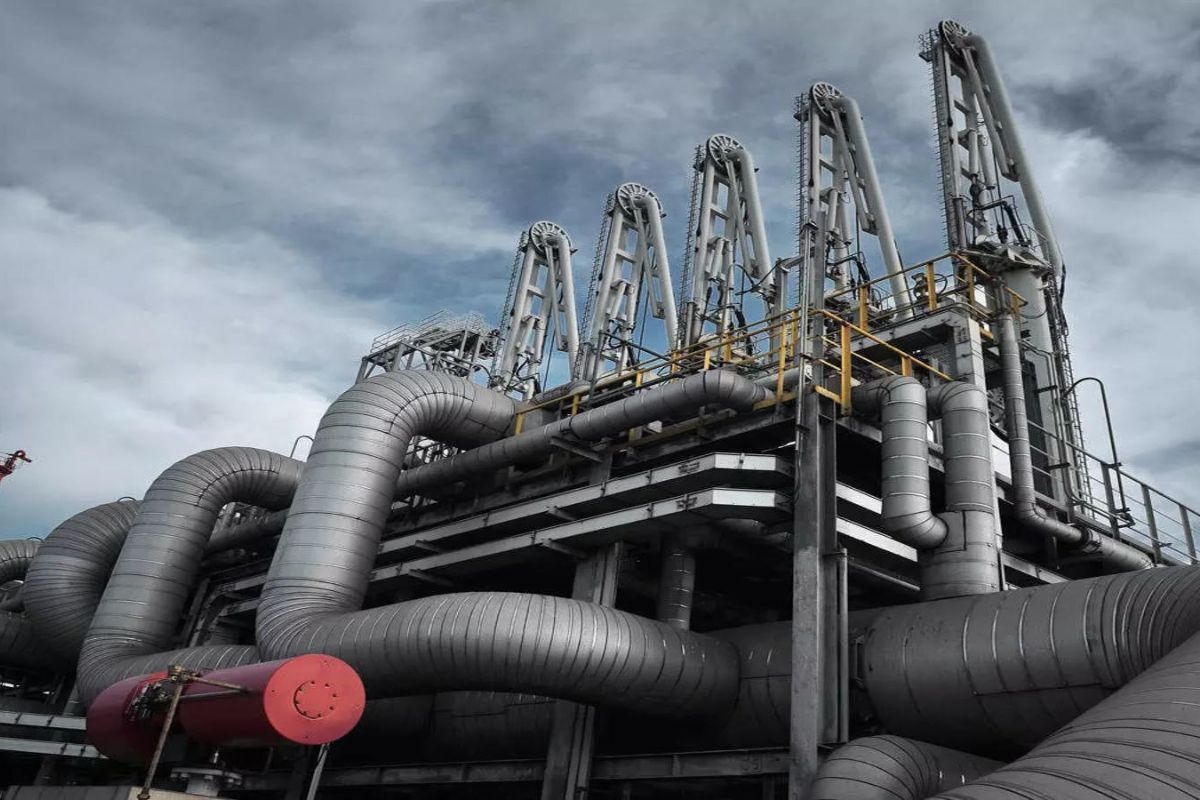Oil’s Uphill Battle: The global oil markets are currently experiencing a period of uncertainty as economic challenges loom, casting a shadow on demand prosSpects.
While geopolitical tensions have historically been a key driver of oil prices, the current situation seems to be different. Despite ongoing conflicts and political unrest in various parts of the world, there has been limited movement in the market. This raises questions about the underlying factors influencing oil prices and whether they are truly reflective of supply and demand dynamics.
Additionally, the emergence of backwardation, where near-term oil prices are higher than long-term prices, suggests a perception of tighter supply in the market. However, this perception may not align with actual demand growth forecasts, which have been varying and subject to deceleration in the coming years.
As we navigate through these complex dynamics, it is crucial to closely monitor U.S. oil rig data and shifting production dynamics to gain a deeper understanding of the future trajectory of global oil markets.
Key Takeaways
– Global oil prices are facing resistance due to economic challenges, including subdued demand due to the ongoing pandemic and uncertainty surrounding the recovery of major economies.
– The rise of renewable energy sources is affecting the demand for fossil fuels, posing a long-term threat to the oil industry as efforts towards carbon neutrality increase.
– Geopolitical tensions alone do not easily sway the oil market, as limited market movement reflects a cautious approach influenced by factors such as supply and demand dynamics, global economic conditions, and investor sentiment.
– The backwardation structure in the oil market signals a perception of tighter supply for prompt delivery, with market participants expecting oil prices to rise in the short term due to increased competition for limited supply.
Global Oil Prices Face Resistance Amid Economic Challenges
Global oil prices are currently grappling with significant resistance due to the prevailing economic challenges impacting the oil market. Despite geopolitical concerns and supply disruptions, the demand for oil remains subdued as global economies continue to grapple with the effects of the ongoing pandemic.
Also Read: OPEC’s Rosy Outlook: Oil Prices Surge Amidst Upbeat Global Demand Projections
The uncertainty surrounding the recovery of major economies, such as the United States and Europe, has dampened investor sentiment, leading to a cautious approach towards oil consumption. Additionally, the rise in renewable energy sources and the push towards carbon neutrality has further affected the demand for fossil fuels, posing a long-term threat to the oil industry.
In light of these challenges, it is crucial for oil producers and market participants to closely monitor economic indicators and adapt their strategies accordingly to navigate this period of resistance.
Limited Market Movement Despite Geopolitical Tensions
Despite ongoing geopolitical tensions, the limited market movement reflects the cautious approach and complex interplay of factors influencing oil dynamics.
It is surprising that events like the alleged Ukrainian drone attack on a Russian fuel export terminal and disruptions caused by the Gaza war and a U.S. strike in the Gulf of Aden failed to trigger substantial movements in oil prices. This suggests that the market is not easily swayed by geopolitical tensions alone.
Instead, it is influenced by a multitude of factors, such as supply and demand dynamics, global economic conditions, and investor sentiment. This cautious approach is understandable, considering the uncertainties surrounding the global economy and the potential impact of these tensions on oil demand.
It also highlights the need for a comprehensive understanding of the oil market and the ability to analyze the interplay of various factors influencing its movements.
Backwardation Signals Tighter Supply Perception in Oil Market
The structure of the oil market, known as backwardation, reveals a perception of tighter supply for prompt delivery. This backwardation is evident in the $1.99 premium of the first-month Brent contract over the six-month contract.
Here are three key points to consider regarding this backwardation:
1. Supply concerns: The backwardation indicates that market participants believe the supply of oil will be constrained in the near term. This perception is driven by various factors, including geopolitical tensions, production disruptions, and OPEC+ production cuts.
2. Demand dynamics: The perception of tighter supply is also influenced by demand dynamics. Despite economic challenges, there are signs of recovery in global oil demand, particularly in emerging markets. This recovery, coupled with expectations of a rebound in travel and economic activities, contributes to the perception of tighter supply.
3. Price implications: Backwardation suggests that market participants expect oil prices to rise in the short term. This perception is based on the belief that tight supply will result in increased competition for prompt delivery, driving prices higher.
Varying Demand Growth Forecasts and Deceleration in 2025
Demand growth forecasts for 2024 provided by leading organizations, such as the U.S. Energy Information Administration, the International Energy Agency, and the Organization of the Petroleum Exporting Countries, present a range of projections, converging on a shared anticipation of deceleration in oil demand by 2025.
These forecasts, with variations ranging from 1.24 million to 2.25 million barrels per day, highlight the uncertainties in predicting the future trajectory of oil demand.
While demand growth has been robust in recent years, driven by factors like economic growth and population expansion, it is important to acknowledge the potential challenges that lie ahead. Economic challenges, such as the ongoing trade tensions and geopolitical uncertainties, may cast a shadow on the prospects of oil demand.
As a result, it is crucial for market participants to closely monitor and analyze these varying demand growth forecasts to make informed decisions in the ever-evolving global oil markets.
U.S. Oil Rig Data and Shifting Production Dynamics
With the recent decrease in the number of oil rigs operating in the U.S., the global oil market is poised for potential shifts in production dynamics. This decline, marking the lowest count since mid-November, adds another layer to the multifaceted landscape of the global oil industry.
Here are three key points to consider:
1. Impact on supply: The reduction in U.S. oil rigs suggests a potential decrease in domestic oil production. This could have implications for global supply levels and may contribute to a rebalancing of the market.
2. Price volatility: Changes in production dynamics can lead to fluctuations in oil prices. As the U.S. adjusts its production levels, it may impact global oil prices, creating opportunities and challenges for oil-producing nations and consumers alike.
3. Geopolitical implications: Shifting production dynamics can also have geopolitical consequences. Countries heavily reliant on oil exports may face economic and political challenges if their production levels are affected by changing market dynamics.
As the U.S. oil rig data continues to evolve, it will be important to closely monitor its impact on global production dynamics and market stability.
Conclusion Of Oil’s Uphill Battle
The global oil markets are currently facing economic challenges that are casting a shadow on demand prospects. Despite geopolitical tensions, there has been limited movement in the market.
The backwardation signals a perception of tighter supply in the oil market. Additionally, there are varying forecasts for demand growth and a projected deceleration in 2025. The U.S. oil rig data and shifting production dynamics also play a role in shaping the future of the market.
Our Reader’s Queries
Q1 What are the factors affecting the demand for oil in the world?
A Several factors influence the demand and supply of oil. These factors encompass the levels of oil consumption, oil reserves, global exchange rates, environmental considerations, political dynamics, and oil speculation within financial markets.
Q2 What is the global demand for oil?
A In the most recent monthly oil market report, the IEA indicated that global demand is projected to increase by 2.3 million barrels per day, reaching 101.7 million barrels per day by 2023. However, the report highlights that this forecast conceals the potential effects of a further deterioration in the overall economic climate.
Q3 What is the future of the global oil market?
A The long-term projection indicates a deceleration in global oil demand, with an annual increase of only 0.4 million barrels per day (mbpd) anticipated until 2027. This contrasts with the earlier trend of a 1.6 mbpd annual rise expected until 2023. Concurrently, there is an expected surge of 44% in global biofuels demand between 2022 and 2027, as it progressively serves as a substitute for petroleum-based products.
Q4 What is the biggest challenge facing the oil industry?
A The oil and gas industry confronts a significant challenge characterized by a consistent decrease in the available workforce over the last decade.
Q5 Why is the global demand for oil increasing?
A The surge in oil demand within the OECD is driven by substantial energy and economic developments. Populations are gaining insight into the implications of initial net-zero policies and targets, prompting policymakers to reassess their strategies for energy transition pathways.




